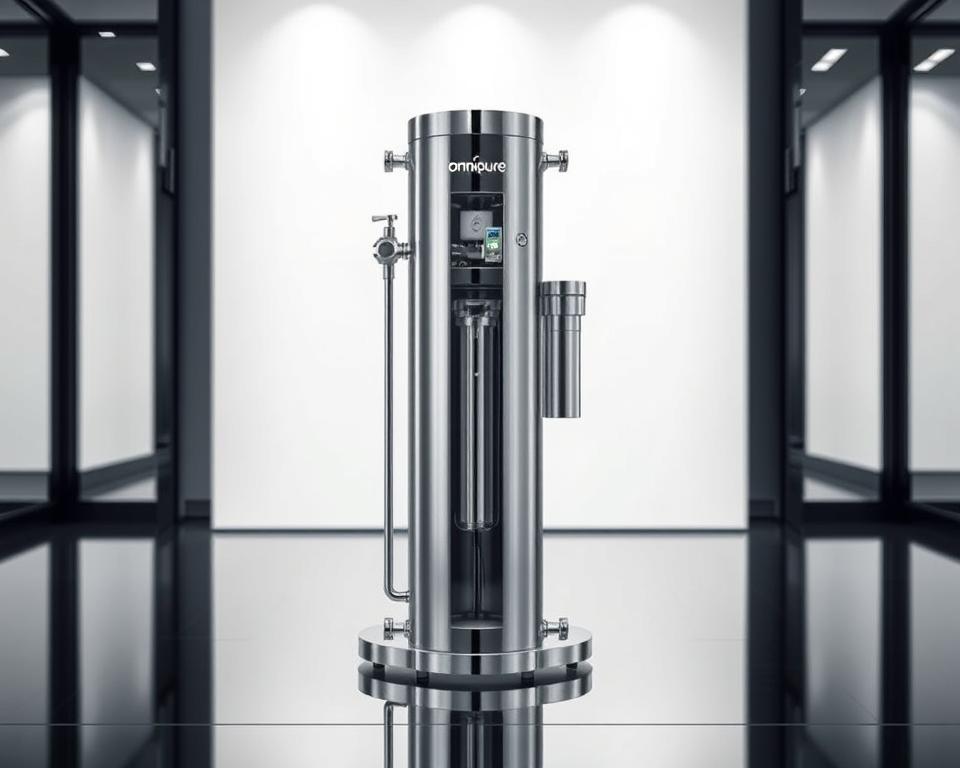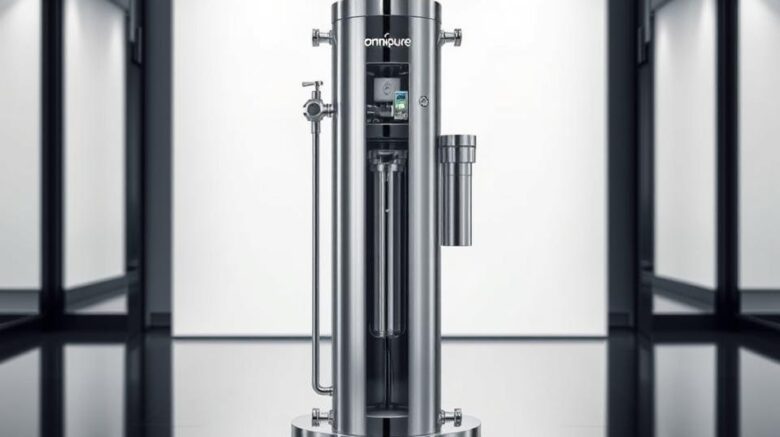Supreme Guide to Kitchen Sink Hose Attachments
Did you know fitting a kitchen sink hose attachment can reduce your water bills? Even though the exact reductions fluctuate, the addition holds value. A top-tier kitchen sink hose attachment boosts both performance and water-saving, enhancing any kitchen. This ultimate guide delves into their significance, advantages, and the way they innovate everyday kitchen duties, like vegetable washing and utensil scrubbing.
Versions from 2016 and 2017 differ in stamina and functionality. No matter the their release period, accurate setup is key; this typically requires detaching strainers or screens, which is indispensable. Regular upkeep is also essential to keep kitchen sink connector at peak performance.
At Installation Parts Supply, we offer a diverse selection suited to different sinks, focusing on durability and usefulness. We will further explore the varieties, advantages, and care for kitchen sink hose attachments.
Important Notes
- Attaching a kitchen sink hose attachment may decrease water bills.
- Accurate installation guarantees performance; removing strainers is a crucial procedure.
- Upkeep your hose attachment by routine cleaning.
- The type of material affects resilience; PVC is widely used but may crimp.
- Checking for leaks following installation is essential for effective performance.
- Utilizing high-quality clamps boosts durability and pressure resistance.
- Browse varieties at Installation Parts Supply for multiple kitchen demands.
Introduction to kitchen sink hose Add-ons
A kitchen sink hose attachment links with your faucet to facilitate water distribution. They come in styles like brass-finished and quick connect. This setup enhances mobility, allowing users to access hard-to-reach areas easily. An budget-friendly attachment can improve kitchen functionality and make chores easier.
Understanding a kitchen sink hose Attachment?
This device includes a pliant hose that channels water flow precisely to targeted locations. Manufactured from materials like brass and plastic, offering varied durability options. Featuring both pull-out and pull-down configurations, they are perfect for multiple functions. Such functions include dish rinsing and cleaning produce.
Advantages of Utilizing a kitchen sink hose Attachment
Kitchen sink hose attachments deliver various benefits. They allow for versatile water flow regulation, optimizing spray patterns and orientation. This versatility facilitates cleaning tight spaces or bulky items. They are also easy to install, without professional intervention. With different cost ranges, locating a budget-friendly model is effortless, enhancing your kitchen seamlessly.
Types of kitchen sink hose Attachments
Identifying the ideal kitchen sink hose attachment is crucial for satisfying your requirements. Each option fulfills specific functions, featuring special advantages. Familiarizing yourself with both bendable and stiff options, together with garden hose connectors, improves your kitchen’s utility.

Pliable kitchen sink hose Attachments
Flexible kitchen sink hose attachments deliver unparalleled flexibility. Suited for navigating tricky spots around the sink, they render washing dishes or rinsing fruits and veggies a breeze. Their capability to maneuver into restricted spots is highly regarded. Their appeal of these attachments is increasing due to their practicality and user-friendliness.
Firm kitchen sink hose Add-ons
Rigid kitchen sink hose attachments are known for their stability, ensuring consistent water flow. They are essential for filling containers or rinsing bulky objects with effortlessness. Made of durable materials like stainless steel, they resist wear and tear efficiently. They are favored by users for their anti-leak properties, demonstrating their reliability for everyday use.
Connectors for Garden Hoses
Adapters for garden hoses connect kitchen faucets with outdoor hoses effortlessly. They are a great help for outdoor activities, ranging from garden watering to cleaning outdoor furniture. These adapters minimize manual effort, preventing the need to move water-filled buckets. Since most faucets are compatible with garden hoses, they offer wide adaptability and convenience.
Deciding on the Best kitchen sink hose Accessory
Selecting the appropriate kitchen sink hose attachment necessitates reviewing various factors. Such considerations boost both functionality and usability in your kitchen space. It is vital to find products that promise durability and are made from premium materials. Ease of installation and the fitting of the attachment with your sink are key to selecting the best option.
Durability and Material Quality
In your quest for a durable kitchen sink hose attachment, focus on the building materials. Options like stainless steel, granite, and high-grade plastics deliver robustness. They are known for their ability to resist wear and tear. Selecting a robust model, you ensure years of consistent operation, preserving its quality despite frequent handling.
Installation Simplicity
A kitchen sink hose attachment offering effortless setup facilitates the entire process. Many models prioritize ease of use, catering to users without advanced technical skills. Choose an attachment that includes simple instructions and every required component. This guarantees a rapid and uncomplicated installation process.
Fit with Your Sink
Confirming your kitchen sink hose attachment matches your sink is crucial. The majority of sinks have pre-drilled holes for such additions. It is imperative to choose an attachment that complements your sink’s design. Correct fitting eliminates issues such as drips, making sure your attachment functions seamlessly.
Effortless Fitting of kitchen sink hose Add-ons
Installing a kitchen sink hose attachment may appear difficult. Still, a straightforward set of instructions makes easier the process. This straightforward method guarantees anyone to improve their kitchen’s functionality. It details a step-by-step guide for attaching a kitchen sink hose, with the tools you’ll need.
Sequential Fitting Manual
Start by gathering all necessary supplies and equipment. Utilize an aerator removal tool to remove the faucet’s aerator. Verify if your faucet is equipped with male or female threads for proper connection. Use Teflon tape on the faucet spout to ensure a tight, watertight seal.
Next, secure the suitable faucet adapter. Make sure it is tightly secured to prevent leaks. Insert a rubber gasket for a firm bond; this should prevent any water leaks if done right. Apply vinyl grip tape over the wrench to prevent surface damage. Exercise extra care so as not to strip the threads, thereby avoiding harm to the faucet.
When a vacuum breaker is absent, adding a hose-type vacuum breaker is wise for system integrity. Make sure to depressurize the hose prior to detachment to stop water from splashing.
Required Tools
| Instrument | Purpose |
|---|---|
| Tool for Removing Aerators | For removing the aerator from the faucet |
| Sealant Tape | Wrap the faucet spout for a watertight seal |
| Multi-size Wrench | Secure the faucet adapter without damaging it |
| Rubber Gasket | Create a secure seal to stop leaks |
| Vinyl Adhesive Tape | Shield surfaces from scratches during use |
Upkeeping Your kitchen sink hose Attachment
To make sure your kitchen sink hose attachment works well and lasts long, routine upkeep is essential. By employing suitable cleaning practices and identifying when to replace it, you can avert major issues down the line.
Maintenance and Cleaning Advice
Preserving the hygiene of your kitchen sink hose attachment is vital to its performance. White vinegar, with its 5-10 percent acetic acid content is effective at eliminating mineral build-ups that lead to blockages. Below are effective cleaning guidelines:
- Soak the sink sprayer cover in vinegar for a minimum of 1.5 hours to thoroughly cleanse it.
- For older models, disassemble the sprayer and submerge its parts like the perforated disk, sleeve, and washers.
- In newer models, simply rotate the spray head anti-clockwise to easily reach its inside elements.
- An alternative method for modern sprayers is to immerse them in a bag filled with vinegar, making sure the sprayer is entirely submerged, for the same soaking duration of 1.5 hours.
As hard water minerals often lead to sink sprayers obstructions, consistent maintenance is vital for smooth operation.
When to Replace Your Hose Attachment
Recognizing when it’s time to replace your kitchen sink hose is crucial to avoid plumbing problems. Watch out for these symptoms:
- Leaks often mean the hose material is deteriorating, implying a need for replacement.
- Visible cracks in the hose signal a decline in integrity.
- Reduced water flow could indicate blockages or damages, suggesting a replacement is needed.
Regular proactive care of your kitchen sink hose attachment greatly extend its lifespan, keeping your kitchen running efficiently.
The Bottom Line
Including a kitchen sink hose attachment can significantly enhance your kitchen’s efficiency. Our comprehensive guide discussed the types, benefits, and maintenance tips of hose attachments. If you want to improve your kitchen duties or refresh your environment, a hose attachment offers adaptability and performance.
These accessories provide better thermal regulation and liquid distribution. They make tackling food particles simple, ensuring a pristine space. Their merits in routine kitchen use are unquestionable, enhancing your cleaning routine considerably.
Improving your kitchen can be simpler and more affordable than expected. With a range of options to suit any budget and taste, a kitchen sink hose attachment has the potential to revolutionize your culinary space. Opting for high-quality selections, like those from Installation Parts Supply, you guarantee durability and contentment.
Frequently Asked Questions
What is a kitchen sink hose attachment?
This device connects with your faucet, converting it to a sprayer. This modification boosts the adaptability of water flow. It streamlines activities such as cleaning and plant care.
How do I install a kitchen sink hose attachment?
When setting up, first remove your faucet’s aerator. Then attach the correct faucet adapter. Ensure every connection is secure and watertight. You’ll likely need an adjustable wrench and Teflon tape.
What factors matter when choosing the best kitchen sink hose attachment?
While picking, consider durability, the quality of materials, ease of installation, and compatibility with your sink and faucet. Using stainless steel or premium plastics offer more durability.
Is it true that kitchen sink hose attachments require little upkeep?
Absolutely, they are easy to maintain. Employ vinegar for cleaning to eliminate mineral deposits. Periodically examine for leaks or clogs. Consider replacing it if it becomes cracked, leaky, or hampers water flow.
May I use a kitchen sink hose attachment for outdoor tasks?
Yes, when used with garden hose adapters, it works excellently for outdoor chores like watering the garden.
Can I find budget-friendly kitchen sink hose attachments?
Certainly, the market features numerous budget-friendly options. Installation Parts Supply provides a variety that balances cost with quality.
Comparing flexible and rigid hose attachments: what sets them apart?
Flexible hose attachments bend to reach difficult angles, enhancing versatility for various jobs. Stiff hose attachments maintain their shape, guaranteeing stable water flow direction. They are typically sturdier.
